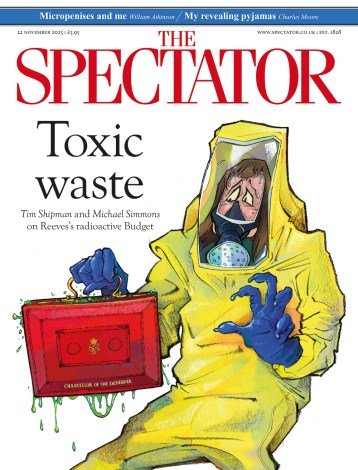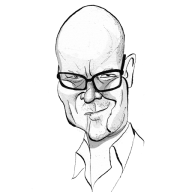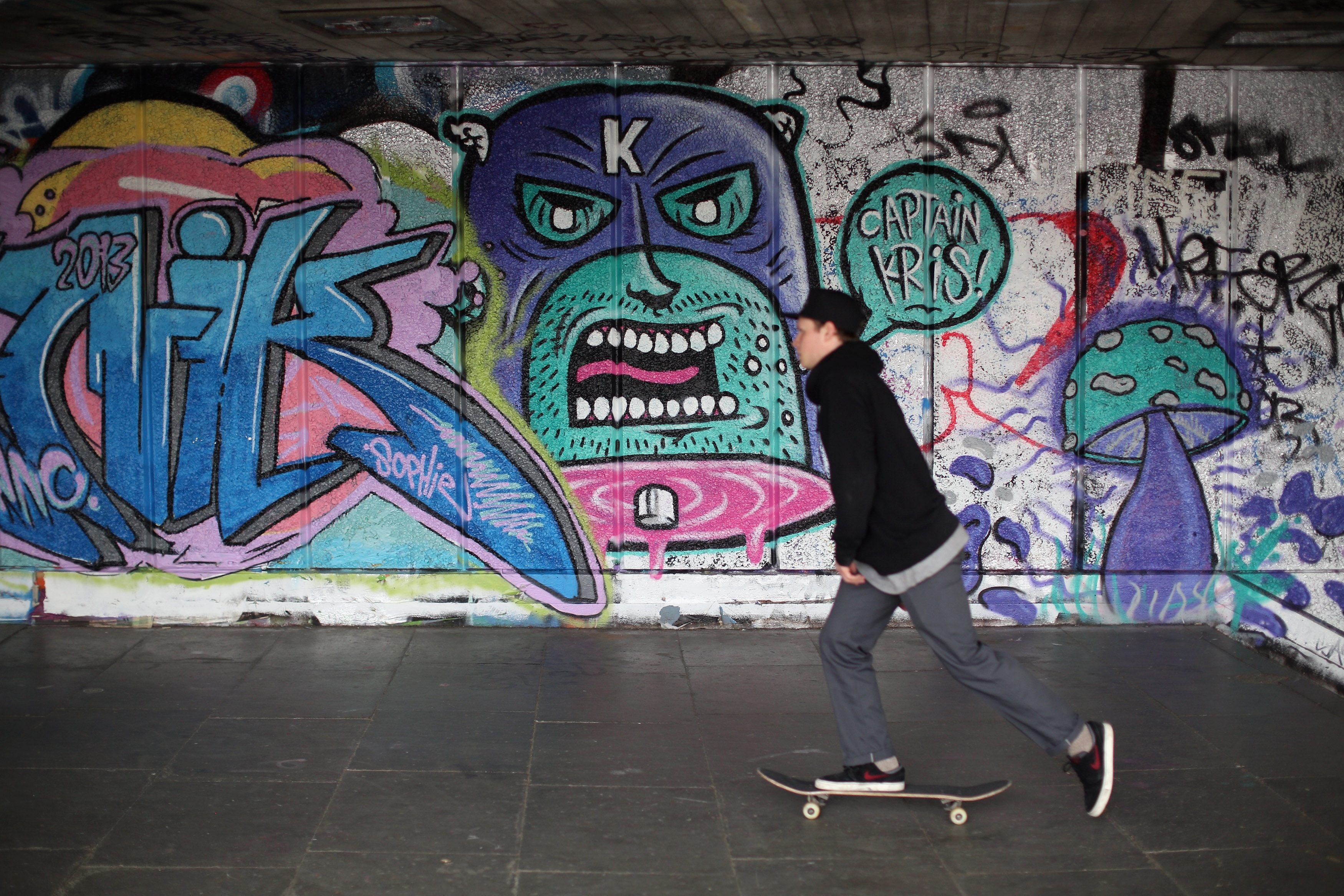I made my first skateboard at the age of 12 by pulling apart a roller skate and nailing each half to a plank of wood. Less than half an hour later, my mother was taking me to the family GP to have my little toe stitched up. She decided to buy me a proper one after that. Thus began one of the happiest periods of my life.
Skateboarding was more than just a hobby. It was a source of identity. I’m sure that’s as true today as it was back then, but in 1976 it had the added cachet of being virtually unknown outside a tiny circle of devotees. It’s not an exaggeration to say I knew pretty much all of them. We felt that odd mixture of superiority and fraternity that comes from being early adopters of a new subculture.
The reason we all knew each other was because there was only one place to skateboard in London: the South Bank. You’d turn up there at about 10 a.m. on a Saturday and by lunchtime the whole crew had arrived. I’m not talking about the pedestrianised walkway next to the Thames, which didn’t exist back then, but a paved area beneath Queen Elizabeth Hall that looked as if it had been designed with skateboarders in mind.
The main section was about three feet below ground level but its great virtue was that it had these sloped banks that were perfect for practising one-eighties. We’d get up as much speed as we could, hurl ourselves up the slopes, pirouette at the top, then hurtle back down again. If we were feeling really confident, we’d attempt five-forties, which involved spinning 540 degrees on two wheels. This was counter-clockwise, mind you, and took a fair amount of courage. If you pulled one of those off you felt on top of the world, particularly if the rest of the crew were watching.
Today this area is referred to as ‘the undercroft’ and among skateboarders it has acquired a legendary reputation. It was the subject of a documentary called Rollin’ Through the Decades and it’s still used by teenage boys to practise one-eighties and five-forties, among other tricks. Whenever I go to the National Theatre to see a play, I always stop by to see what the new generation are up to.
Unfortunately, it’s now under threat. As the area surrounding it has been developed, it has become valuable real estate, and the owners of the Southbank Centre want to exploit it for commercial gain. This has spawned a ‘Long Live Southbank’ campaign that I wholeheartedly support. The developers have offered to build an exact replica a few hundred yards away, but the reason skateboarders won’t be bought off by this is that the location of the undercroft is inextricably bound up with its history and identity. It is the birthplace of British skateboarding and, as such, something akin to sacred ground, at least in the eyes of the sport’s enthusiasts. Offering to move it is a bit like offering to relocate the Acropolis.
I feel particularly strongly about this because as a teenager the main argument I used to have with my parents and their friends was about the sport’s longevity. Whenever I complained about the lack of places to skateboard in London, they would always say it was just a passing fad. Why should local authorities go to the expense of building skateparks — or setting aside areas in public parks — when it was clearly such a flash in the pan?
I would make the case for skateboarding as a permanent fixture of the sporting landscape as best I could, but it was an argument I couldn’t win, because back then it was still in its infancy. With the benefit of hindsight, it’s clear that they were wrong.
I suspect the reason the undercroft has come to mean so much to skateboarders is because we’ve never managed to persuade the authorities to create any special facilities for us. Yes, there are now some purpose-built skateparks, but they are few and far between and usually overpriced. Our attachment to the undercroft isn’t due to any lachrymose sentimentality. It’s because for almost four decades it has been one of the few places to skateboard in London. To threaten to take it away, now that skateboarding has proved its value, is to add insult to injury.
So please go to www.longlivesouthbank.com and sign the petition to save the undercroft. This is a piece of history that deserves to be preserved.








Comments